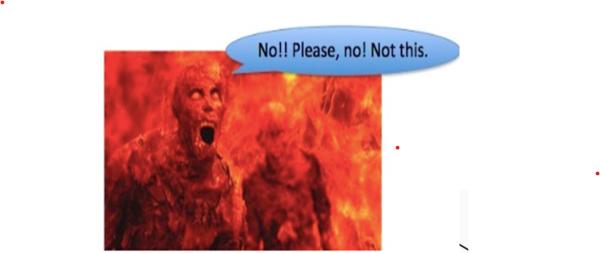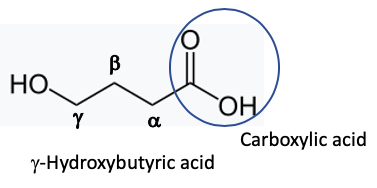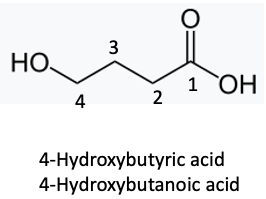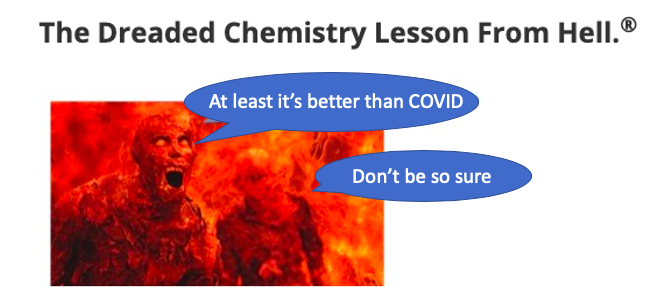
A recent NBC report gave us some bad news (is there ever good news?) about yet another abused drug. gamma-Hydroxybutyric acid (GHB), which became infamous as a date rape drug (1,2) in the 1990s, is becoming popular again following years of declining use.
Here are some things you may or may not know about the drug:
- GHB is a naturally occurring neurotransmitter.
- But when taken orally, especially with alcohol it can be deadly.
- It has 72 names. Like they couldn't come up with 73?
- The drug has multiple pharmacological functions: sedative, central nervous depressant, general anesthetic, etc.
- GHB itself is a liquid which makes it a pain in the ass to dose.
- But it contains a carboxylic acid group that can easily be converted to its sodium salt, a white powder.
- The salt, which is called sodium gamma-hydroxybutyrate or sodium oxybate (generic name), is actually an approved drug used to treat (believe it or not) narcolepsy. Its brand name is Xyrem, which is not especially surprising. When is the last time you saw a drug name that doesn't contain the letter X?
- It used to be sold in health food stores (!). Apparently, weight lifters think it enhances their performance.
- Xyrem also reduces the craving for alcohol
What the hell does the gamma mean? That's actually pretty easy...

One of the 16 bazillion systems for naming chemicals uses Greek letters to identify the carbons relative to the carboxylic acid (and many other functional groups). So, the main functional group doesn't even get a lousy Greek letter – blatant discrimination if you ask me – but the carbon atoms attached to the damn thing are assigned Greek letters in the order of the Greek alphabet. The hydroxyl group is three carbon atoms away from the carboxylic acid, hence, the letter the third letter in the alphabet - gamma.
OK, I lied. It isn't so easy after all. Here is one of the many reasons chemistry drives people crazy.

The "official" name (next paragraph) for GHB is 4-hydroxybutanoic acid. But if you go into the lab next door and ask for that, two things will happen:
- The chemist you asked will throw cans of ether at you because NO ONE but a certified loser would ever use that name. It's commonly called (among other things) 4-hydroxybutyric acid because... who knows? It just is.
- Said chemist won't have it anyhow, because it is a Schedule 1 (illegal) drug - high addiction potential and no accepted medical use (with the exception of Xyrem). If you're caught with a bunch of GHB you're in deep doodie.
Hmm. I'm already talking about chemical names. What could possibly come next?
I think you know...
Get ready, boys and girls. It's that time again! You know you want it...
Here it comes...

This TDCLFH® is about how chemicals get their names. Could you possibly be more excited?
One system of naming chemicals is called IUPAC, which stands for the International Union of Pure and Applied Chemistry – an international organization that is responsible for assigning chemicals systematic names. Can you imagine their annual meeting?? Talk about mesmerizing!

The 2019 IUPAC conference. Image: Free Travel Journals
The IUPAC nomenclature system was designed to enable chemists (and other assorted dweebs) to assign an unambiguous unique name to every chemical. This presumably enables chemists to draw a chemical structure from the name or the other way around. This may be fine for GHB, but things can easily get out of hand. Here's the official IUPAC name for Vitamin B12:
Cobinamide,dihydrogenphosphate(ester),inner salt,3'-ester with(5,6-Dimethyl-1-a-d-ribofuranosyl-1H-benzimidazole-kn3),ion(1+)(9ci)
If that's not bad enough, consider the nightmare name of azithromycin:
(2R,3S,4R,5R,8R,10R,11R,12S,13S,14R)-11-[(2S,3R,4S,6R)-4-(dimethylamino)-3-hydroxy-6-methyloxan-2-yl]oxy-2-ethyl-3,4,10-trihydroxy-13-[(2R,4R,5S,6S)-5-hydroxy-4-methoxy-4,6-dimethyloxan-2-yl]oxy-3,5,6,8,10,12,14-heptamethyl-1-oxa-6-azacyclopentadecan-15-one
No chemist on earth, except for (maybe) a few mutant life forms, could look at either of those names and draw the structure of B12 or azithromycin. Nor could any of us take a look at the structures and come up with that name. (It is done by computers.) As if organic chem isn't sufficient to drive sophomores to swallow razor blades we have to deal with this madness too?
Assuming you haven't already swallowed a bunch, let's continue.
1. gamma-Butyrolactone (GBL)
The title of this god-awful article mentions two "cousins" of GHB. NBC incorrectly calls them "analogs." They're not. Both 1,4-butanediol (BDO) and gamma-butyrolactone (GBL) are pro-drugs of GHB; they have no pharmacological activity until your body metabolizes them.
Here is the one-step enzymatic metabolism of GBL to GBH. The metabolism occurs in the blood and is lightning fast, so much so that if you swallow the stuff (not recommended) you actually get higher levels of GHB into your brain faster than if you took GHB itself. (2)

2. 1,4-Butanediol (BDO)
1,4-butanediol (BDO) is a very common chemical that is also metabolically converted into GBH, but not as quickly as GBL. Drinking this stuff in order to get GBH into your system is a very bad idea. According to WebMD:
"Butanediol is UNSAFE when taken by mouth. It has caused more than 100 deaths. Other serious side effects include breathing problems, coma, loss of memory, combativeness, confusion, agitation, vomiting, seizures, and very slow heartbeat. People who use butanediol on a regular basis and then stop may experience withdrawal symptoms such as sleep problems (insomnia), tremor, and anxiety."
Here is the two-step enzymatic metabolism of BDO:

Interestingly, both BDO and GBL are commonly used industrial chemicals; both used to be available on Amazon.
FUN WITH CHEMISTRY!
This is for you few martyrs who made it this far. Here's a great example of how small changes in molecules can make huge differences in their properties.

Start with the black box in the middle. It contains the structure of butyric acid, which smells a lot like vomit. Which makes perfect sense, since butyric acid is in your stomach. So, when you blow beets, the lovely scent is due to butyric acid. The same chemical is also found in ginkgo berries, you know, those foul little bastards that stink up the whole street if you step on them.
Now, follow the green arrow to the left. Replacing the hydrogen with a hydroxyl group (green box) gives you GHB, which doesn't smell like much of anything, but if you consume too much of it, up comes dinner along with the lovely vomit scent.
Now, follow the red arrow to the right. Adding an ethyl group to the carboxylic acid gives you an ester (red box). Low molecular weight esters smell quite nice; they make up the scents and flavors of fruits. In this case, the ester is called ethyl butyrate (aka pineapple oil). Now, take the pineapple flavor and use it to make a pina colada. Yum! But if you drink too much... more vomit!
(If you think this can't get any worse, don't bet on it.)
Should you find yourself in the mood to extract the butyric acid from a pile of vomit - hardly the most pleasurable activity imaginable - it's possible to chemically convert it back to pineapple oil by a process called esterification. I even wrote an equally stupid article about how to do this.
I hope you've enjoyed your drug/chemistry lesson. If it has caused you to develop narcolepsy, at least there's an approved drug for that. Just don't take too much and vomit. That stuff smells nasty.
NOTES:
(1) In the 1990s the use of GHB as a date rape drug was common enough that women in bars were advised to carry their drinks with them so that predators didn't pour it into the glass.
(2) Roofies (rohypnol), a super-strong Valium-like drug was also used for this purpose.
(3) GBL is lipophilic (fat-loving). Lipophilic chemicals are (in general) better absorbed and penetrate cells more readily than hydrophilic (water-loving, polar) compounds. GHB is much more hydrophilic than GBL.



